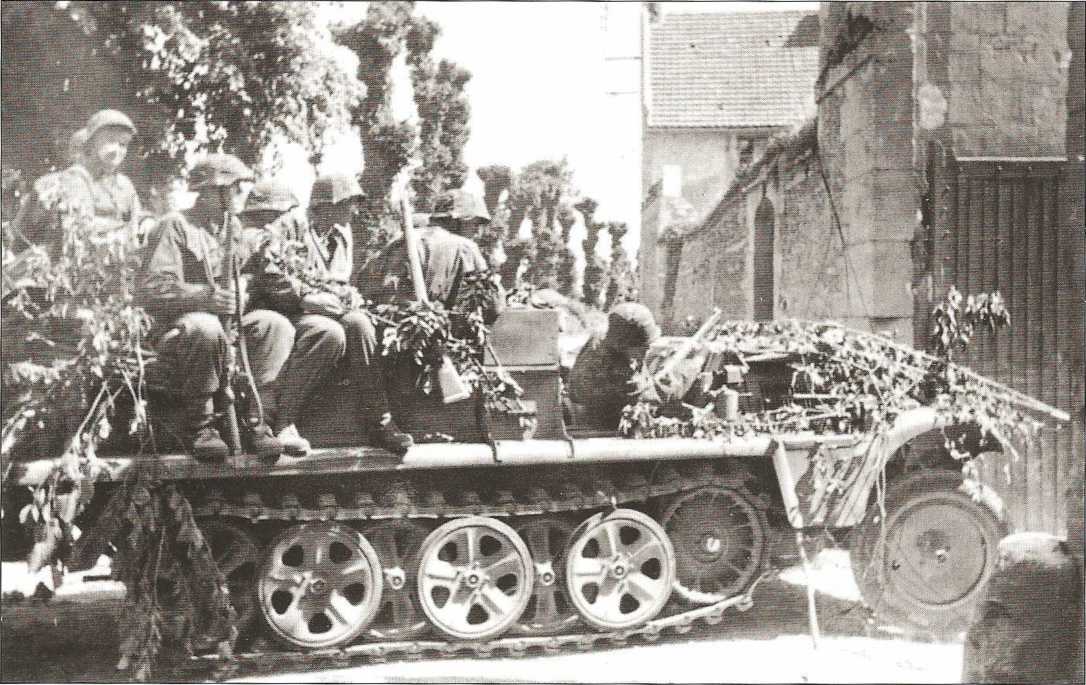As the Hitler Jugend moved into action. Allied fighter-bombers harried the long columns of vehicles all the way to the front. The training of the division was such that it maintained a good distance between vehicles and this reduced losses from the air attacks. However, Allied air superiority disrupted all German movement and provided Allied forces with close air support throughout the battle for Normandy. This marked a real change from the Meuse crossing, when the Luftwaffe dominated the skies over Sedan. In Normandy, the bombardment from the heavy guns of Allied ships offshore also came as a nasty and novel surprise for all, including the NCOs and officers from the Eastern Front. The determination of the Hitler Jugend was evident. Rudolf Schaaf of the 1716th Artillery recalled how ‘the SS showed that they believed that thus far, everybody had been fighting like milkmaids.’ Schaaf watched the bleak young men of the Hitler Jugend move towards the front line, to see them return in tears the same evening. But these tears were not from the strain of battle, but because they had failed to reach their objective and drive the Allies into the sea.
On 7 June, the Hitler Jugend panzergrenadiers were given their orders: to drive the enemy back into the sea with an
Below: France 1944: panzergrenadiers being ferried into battle along the narrow Normandy hedgerows. The camouflage was an attempt to avoid detection by roving Allied fighter-bombers. Allied air superiority over the beachhead was total.

Attack that was to go in at midday. Through the night lorries brought the panzergrenadiers to the town of Caen. Once at Caen, the men debussed and made a night march through the town to take up their assault positions. Artillery officers moved ahead to find vantage points to direct the artillery of the division; the 150 tanks of the division did their best to deploy with the panzergrenadiers. The air attacks and general confusion surrounding the deployment of the Hitler Jugend panzers and panzergrenadiers meant that the concentration for the attack was far from ideal: divisional cohesion broke down and men moved to the front as best as they could. The tanks, meanwhile, became clogged in the rear as they tried to push forward to the start line for the attack. Once in attack position, the Hitler Jugend dug slit trenches and fire pits; everything was camouflaged to avoid the attention of Allied fighter-bombers, before the men could finally grab a few hours of much-needed sleep.
But everything was not going according to plan. The 26th Regiment of the Hitler Jugend, with all its tanks, had run out of fuel 22 miles east of the river Orne. In the end.
When it came to attack on the 7 June, only the three battalions of the 25th Panzer Grenadier Regiment were ready. It was this small force, supported by two panzer detachments that would have to drive the Allies into the sea.




 World History
World History









